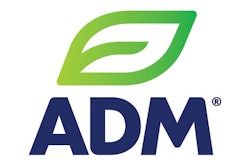
China’s large purchases of U.S. corn over the first five months of the marketing year have been a big boost to U.S. export sales. These purchases have put the U.S. on pace to break the previous annual record for corn exports.
The U.S. booked sales of 17.68 million metric tons (MMT) (696 million bushels) of corn to China as of Feb. 18, 2021, versus a mere 61,000 metric tons (2.4 million bushels) at the same time last year — a turn of events for both the corn markets and the U.S.-China ag trading relationship.
U.S. sorghum sales to China as of Feb. 18 surpassed 5 MMT (197 million bushels) versus 600,900 metric tons (23.7 million bushels) at the same time last year.
These purchases lead to a trend of improving grain-product demand from the world’s most populous country and second-largest economy.
“We’re up to 17.7 MMT of U.S. corn sold to China, just leaps and bounds ahead of last year and really any year with China that we’ve seen on record. It’s caused an explosion in overall corn exports,” says U.S. Grains Council (USGC) President and CEO Ryan LeGrand.
USGC’s staff following dynamics in China from both Washington and Beijing attribute this strong demand to high import margins achievable by importing U.S. corn to China. This demand is due to lowered grain stocks and a swine sector that is transitioning to full corn, feed grain and oilseed meal-based diets as it rebuilds from African Swine Fever (ASF).
“While many expected demand to be sluggish as ASF reduced swine inventories, it appears that ASF caused swine producers to reduce the use of inferior feed ingredients and increase corn inclusion in swine rations.” says Bryan Lohmar, director of USGC’s Beijing Office. “These changes, along with expanded poultry production, caused corn demand to be even more robust than before the outbreak. And if that is the case, then we should expect demand to continue to grow as swine inventories recover to pre-ASF levels.”
The Phase One deal between the U.S. and China led to initial buys in late spring, but the eye-popping, million-ton-plus sales of U.S. corn seen in early 2021 are due to market demand. This demand has led the country to surpass its tariff rate quota, which establishes the amount of corn imported under a low tariff, for both public and private entities in the 2020 calendar year and into 2021.
Yet, there are always hurdles to overcome with respect to trade relationships, and China offers nuances that make the flow of grain more complex.
“It’s a system,” says LeGrand. “For long-term success, we know we need a strong trade policy to give us continued access to the Chinese market and robust market development in-country to help us prove to new customers why our products are the best and show existing customers how to make the most of their purchases from the United States. We must be able to strongly defend our products when we run into market barriers as well as have response mechanisms in place when there are problems contracting and shipping. We are pleased we can always rely on our strong domestic industry to continue to produce and ship high-quality grains, year in and out.”
As of Feb. 18, sorghum, which is imported into China by the private sector, is booming, with sales up more than 600% in the 2019/2020 marketing year.
“While we have a long, storied history with the country, it’s important to continue to work with China to facilitate those sales,” LeGrand says. “In fact, that story is still being written. China is purchasing more now than they ever have.”
In the spring, China should start to buy new crop U.S. corn to add to new crop U.S. sorghum sales already on the books. That would portend longer-term demand and a more solid trading relationship .
U.S. barley also surpassed a hurdle in China last year. With the approval of a phytosanitary protocol for barley to China, U.S. barley can now be exported — a product of the U.S.-China Phase One deal.
USGC has been active in barley promotion in China, dating back to the early 1990s. Because China is the world’s largest beer producer, USGC staff have been communicating with both governments about a barley protocol — the primary roadblock to market entry for U.S. barley — for years.
The new protocol is needed for Chinese imports of malting barley and feed barley, so, in anticipation of the ability of U.S. producers to export barley, the USGC staff in China worked with local importers to expand their supplier contacts. This work provides another export destination for U.S. barley farmers.
The list of items eligible for tariff exemptions published by China to comply with the Phase One agreement with the U.S. did not include barley malt products. USGC worked with contacts in the Chinese microbrewing industry to petition for barley malt exports. To help educate Chinese brewers about U.S. barley malt, USGC has been co-sponsoring events over the past two years with industry associations and stakeholders.
China is importing record amounts of malt from various sources worldwide, importing 12,155 metric tons of malt in the 2020 calendar year, yet only 43 metric tons of malt from the U.S., representing just 0.36% market share. Meaning there is a significant opportunity to increase U.S. malt exports.
There is still work to do in China ... specifically regarding distiller’s grains with solubles (DDGS).
“We must ensure we retain the Phase One agreement that includes many purchasing commitments and structural reforms while at the same time encouraging their government to waive 232 tariffs on ethanol. In addition, we need to work toward removal of anti-dumping and countervailing duties on DDGS,” LeGrand says. “We must continue to maintain our relationship with China because they are such a strong source of demand and because they hold even more potential.
“We are seeing only some of that potential this year in the export sales that we have on the books, but it could grow much more,” he concludes. “It’s up to us to capture that demand.” ■

















